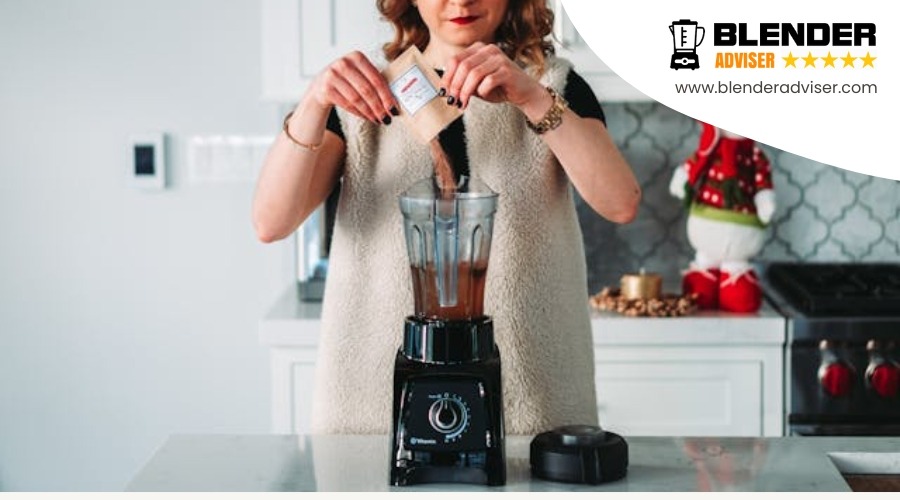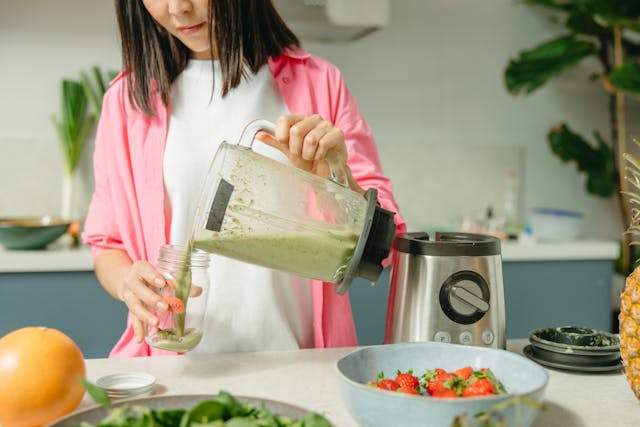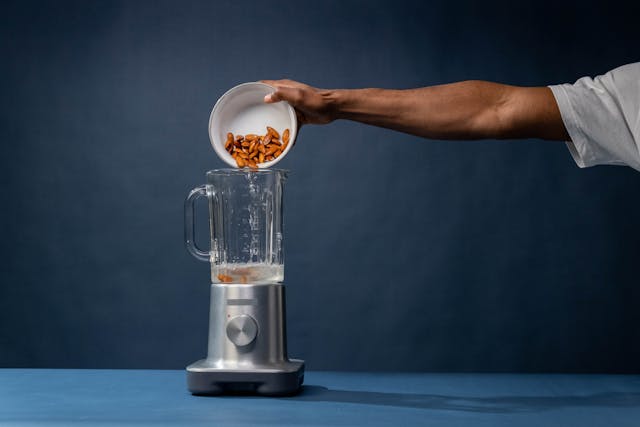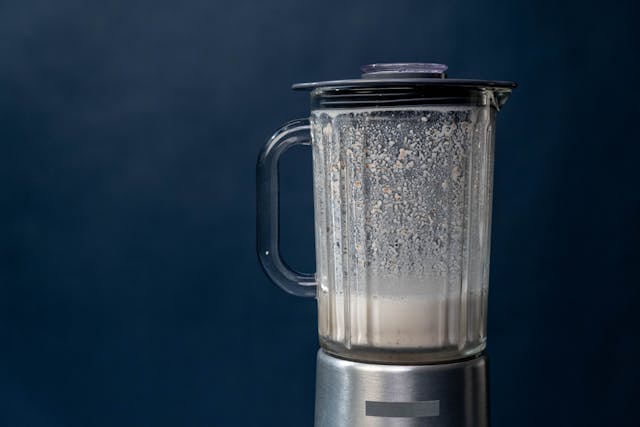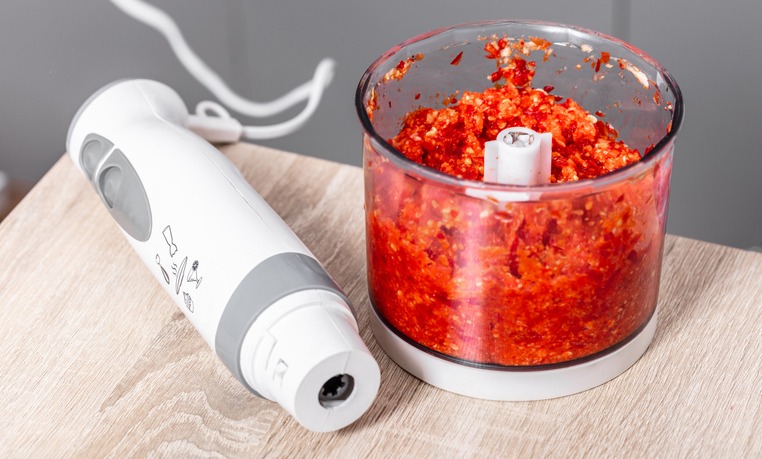Have you ever wondered if your blender could be the key to elevating your culinary creations, beyond just smoothies and soups? As a chef, you’re constantly searching for ways to streamline your process and infuse innovation into your dishes.
Blender hacks, from self-cleaning techniques to the lesser-known art of Mason jar blending, might just be the secret ingredients you’ve been missing. These tricks not only save time but also open up a world of texture and flavor possibilities.
Let’s explore how these simple yet effective hacks can transform your cooking, making every blend an adventure in efficiency and creativity.
Self-Cleaning Magic
Keeping your blender spotless doesn’t have to be a chore, thanks to a self-cleaning hack that only requires warm water and a drop of dish soap. This method is a lifesaver, especially after you’ve whipped up a large batch of your favorite dressing or sauce. The remnants of olive oil and other ingredients can make your blender look like a disaster zone. But don’t fret; the solution is simpler than you think.
Start by filling your blender halfway with warm water, then add just a drop of dish soap. Secure the lid and turn on the blender for a quick cycle. The warm water and soap combination works wonders, swirling around to reach every nook and cranny. This self-cleaning cycle effectively loosens and removes olive oil residue and other stubborn bits from your large batch cooking adventures.
Once the cycle is complete, rinse the blender thoroughly with clean water. If you’ve tackled something particularly sticky or odorous and find that the soap and water aren’t quite cutting it, try adding a mixture of water and vinegar to the blender before running another cycle. This extra step will ensure that your blender isn’t just clean, but also odor-free.
Quieting Your Blender
If you’re looking to blend without waking the neighborhood, several hacks can significantly reduce the noise your blender makes. New York apartment dwellers and Cooks Illustrated fans alike know the struggle of noisy kitchen appliances. Here are some tried and true methods:
| Hack | How It Helps | Ease of Implementation |
|---|---|---|
| Towel Underneath | Absorbs vibrations | Very Easy |
| Rubber Mat/Silicone Pad | Further reduces vibrations | Easy |
| High-Quality Blender | Built-in noise-reducing features | Varies |
| Secure Blender Lid | Prevents rattling | Very Easy |
| Lower Speed Setting | Minimizes noise output | Easy |
Firstly, simply placing a towel underneath your blender can work wonders by absorbing excess vibrations. For a more effective solution, consider a rubber mat or silicone pad designed specifically for noise reduction. Investing in a high-quality blender with noise-reducing features can make a significant difference but requires more upfront cost. Always ensure the blender lid is securely in place to avoid unnecessary rattling. Lastly, operating the blender on a lower speed setting, when possible, can help keep the peace in your kitchen and beyond.
Mason Jar Blending
After exploring how to quiet your blender, let’s explore how attaching a Mason jar to the blender base can revolutionize your blending experience. Mason jar blending isn’t just a novelty; it’s a practical, efficient way to manage your kitchen tasks. This method shines when you’re making single servings or need just the right amount of sauce or dip. The beauty of it lies in the simplicity and the reduction of cleanup time afterward.
Why should you consider Mason jar blending? Here are four compelling reasons:
- Single Servings Made Easy: Perfect for smoothies or protein shakes, ensuring you don’t overdo portions.
- Effortless Cleanup: Since you’re blending directly in the Mason jar, there’s no need to wash both a blender jar and your container.
- Versatile Portion Control: Mason jars come in various sizes, allowing you to easily adjust the quantity of your blend.
- Ideal for Small Batches: Great for making just the right amount of sauces, dressings, or dips without waste.
Wine Aeration Hack
Blending your wine for 30 seconds can remarkably enhance its flavor and aroma, serving as an efficient alternative to traditional decanting. This method of wine aeration through blending introduces oxygen into the wine, softening its tannins and improving its overall taste profile. It’s a quick and efficient way to achieve the same benefits of decanting without the wait. The blender’s fast rotation helps open up the wine, making it smoother and more enjoyable to drink.
Here’s a quick guide to understanding this wine aeration hack:
| Step | Action | Result |
|---|---|---|
| 1 | Pour wine into blender | Prepares wine for aeration |
| 2 | Blend for 30 seconds | Introduces oxygen, softens tannins |
| 3 | Pour blended wine into glass | Ready to enjoy enhanced flavor |
| 4 | Compare with non-aerated wine | Notice the smoother, more open taste |
| 5 | Repeat with different wines | Explore the improved taste profiles |
Blending wine for aeration is not just about saving time; it’s about enriching your wine-drinking experience with minimal effort. Next time you open a bottle, consider giving it a quick blend to unlock its full potential.
Spice Grinding Myth
Many believe using a blender for grinding spices or coffee beans is a convenient shortcut, but this method can actually harm your equipment and affect the quality of your ingredients. The spice grinding myth suggests that all kitchen tasks can be simplified with a blender, yet this overlooks the blender limitations when it comes to hard, dry items.
Here’s why your blender isn’t the ideal spice grinder:
- Blade Damage: The tough nature of coffee beans and spices can dull or even damage the blender blades.
- Inconsistent Sizes: You’ll often end up with uneven particle sizes, which can lead to inconsistencies in flavor and texture in your dishes.
- Airborne Particles: The tall pitcher design of most blenders means fine particles can float up and out of the blender, creating a mess and wasting ingredients.
- Motor Strain: Regularly grinding hard items can overwork and potentially damage the blender’s motor.
Conclusion
So, now you’re armed with some game-changing blender hacks to elevate your cooking game. From self-cleaning your gadget with ease, quieting it down for those early morning smoothies, to whipping up single servings in a Mason jar, and even aerating wine or grinding spices—the possibilities are endless.
Embrace these tricks to not just save time but also to experiment and enjoy your culinary creations. Get blending and let your kitchen adventures begin!

